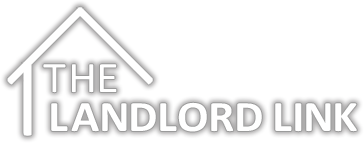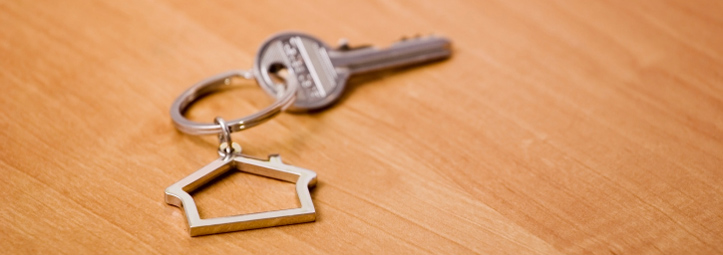Buy-to-let properties are attractive investments for many but there are lots of considerations to take into account before you buy. Buying a house can be a complicated process, even more so when there are several differences between buying property in the UK and buying a property in Scotland.
We’ve put together 10 top tips to provide you with essential information and help you understand the process if you’re looking at purchasing a buy-to-let in Scotland.
1 What does a buy-to-let investment in Scotland involve?
Whether you’re an experienced landlord or new to buy-to-let properties, you need to fully understand the ins and outs of letting a property. Being a landlord means that you have certain legal obligations, especially when it comes to gas safety checks and service charges, so make sure you know what you’ve signed up for.
Landlords in England and Wales must check that their tenants can legally rent their property. This is known as ‘Right to Rent,’ however it does not apply to landlords in Scotland.
2 Check your finances
Buy-to-let properties in Scotland can generate a good amount of income (rental properties in Glasgow have some of the best yields in the UK) but make sure you can afford the property in the first place. It’s a good idea to get financial advice to go through the legal costs that are involved in purchasing a buy-to-let property.
You’ll need to make sure you can cover the costs for any solicitors fees, survey fees and property valuations, on top of maintaining the property so it’s safe for tenants to live in.
3 Land and Building Transaction Tax
In England, Stamp Duty Land Tax applies to properties that cost more than £125,000, however in Scotland, this charge does not apply. Instead, you’ll pay Land and Buildings Transaction Tax when you buy a property.
Other differences between Stamp Duty Land Tax in Scotland and the UK include:
• Payments are made to Revenue Scotland and not the HMRC
• Scotland uses different price purchase bands to those in the UK to determine the Land and Buildings Transaction Tax rates
As of January 2019, an extra 4% of the purchase price of the property must be paid on top of the existing Land and Buildings Transaction Tax if you purchase a second property or a buy-to-let in Scotland. This extra charge is known as an Additional Dwelling Supplement (ADS).
The LBTT rates and bands were changed temporarily in July 2020 to stimulate the Scottish housing market. These special rates which make property at the lower end of the market much more affordable will last until the end of March 2021.
Land and Buildings Transaction Tax Bands
| LBTT percentage rates from 15 July 2020 to 31 March 2021 | ||
| Price Bands (£) | LBTT percentage rate (%) |
ADS Percentage rate (%) |
| Up to £40,000 | 0% | 0% |
| £40,000 to £250,000 | 0% | 4% |
| £250,001 to £325,000 | 5% | 4% |
| £325,001 to £750,000 | 10% | 4% |
| Above £750,000 | 12% | 4% |
Use The Landlord Link’s LBTT Calculator to find out how much Land and Buildings Transaction Tax you’ll pay on your property investment in Scotland.
4 Get the right mortgage
When you purchase a buy-to-let property in Scotland you’ll need a specific buy-to-let mortgage. The mortgage rates on buy-to-let properties can be higher than residential mortgages, however failing to ascertain the right mortgage is considered as fraud, and can lead to heavy penalties.
5 Home Reports
It is essential to read through and check the seller’s Home Report to ensure you are aware of the quality of the buy-to-let property you are purchasing.
There are three aspects to a Scottish Home Report: the Single Survey, the Energy Report and the Property Questionnaire. Prepared by a Chartered Surveyor and an important part of the report, the Single Survey details information about the condition and value of the property.
The Energy Report was devised in Scotland and is like the EPC used in England and Wales. It is an essential document that establishes the energy efficiency of the property and informs the buyer of cost-effective ways to improve the property’s environment impact.
The third part of the Scottish Home Report includes the Property Questionnaire, vital for landlords who are calculating their buy-to-let investment. The questionnaire includes information such as the contents of the property, parking arrangements and any alterations that have been made previously, giving landlords an idea of the costs needed to make the property habitable.
You can find out more about Scottish Home Reports and compare Home Report providers with the reallymoving.com online quote form.
6 Know the area and your tenant
It’s important to research the area before deciding on purchasing a buy-to-let property to make sure both the property and the location will appeal to tenants. Towns and cities with good transport links are often extremely desirable, as well as areas with universities, hospitals and good schools.
Read more: The best areas for buy-to-let in the UK in 2020
The type of tenant you want to attract is equally as important as the location of your property. Do you want students renting your house? Or young professionals? Whatever type of tenant you’re looking for, be sure to provide the type of fixtures and furnishings they will expect, especially as a group of students will have different wants and needs from a property to a professional couple.
7 Agency Fees
Are you going to manage your buy-to-let property yourself or are you going to instruct a letting agency? Make sure you can complete all your obligations as a landlord if you’re choosing to manage the property yourself, especially as it can be costly if you fail to meet the agreements within the tenancy agreement.
Similarly, you’ll want to compare costs to make sure you get the best deal if an agency is going to manage the property instead.
8 Landlord Insurance
As a landlord you will need specialist insurance for your buy-to-let property. Along with building insurance, if your property is furnished or part furnished, you’ll also need contents insurance too. There are various types of landlord insurance policies available so be sure to research for the right deal, especially as you might also be able to purchase a policy that covers your rental income if your tenant doesn’t pay.
9 Calculate the investment returns
To understand how well your buy-to-let property is doing, you will need to calculate the return on your investment. Property returns are usually referred to through rental yields and to calculate the return on your investment, you need to work out the sum as a percentage of how much you have put down to purchase the buy-to-let property.
The biggest problem for landlords comes from rental voids where a property sits empty in between tenants and don’t forget that maintenance costs, tax and other expenses will all make a dent in your investment returns.
10 Spend money to make money
As a landlord you are obliged to ensure that your buy-to-let property is in a habitable condition for your tenants. While many might think that basic fittings and furnishings will save money, poor quality renovations to your buy-to-let could cost you more money in the long run. Covering up problems with cheap repairs can often mean you’re spending more money on fixes that won’t last.
It’s a good idea to nip problems in the bud and rectify any issues as and when they arise – that way your tenants will see that you’re proactive in helping them with solutions that will keep both your property and your tenants happy.
If you’re looking for your next buy-to-let property in Scotland, take a look at the listings available, or add your own property for free.
Alternatively, if you’re looking for Conveyancing, Surveying or home removals services and Scottish Home Reports, visit reallymoving.com for instant quotes and more information.




